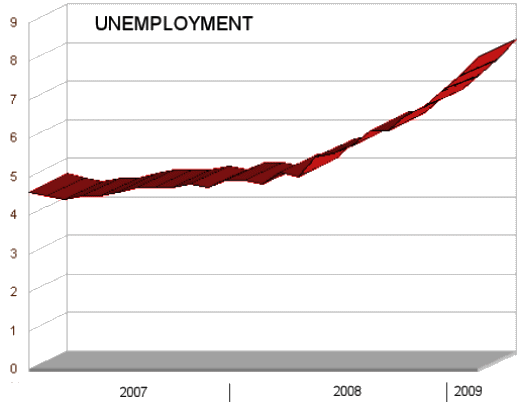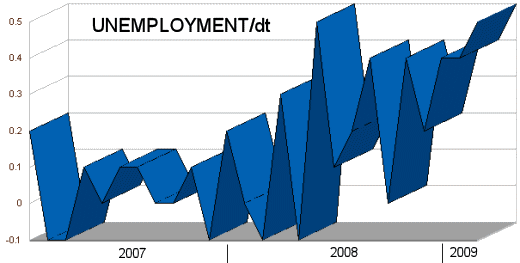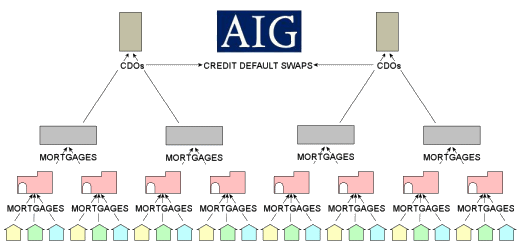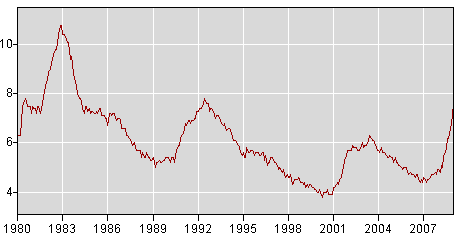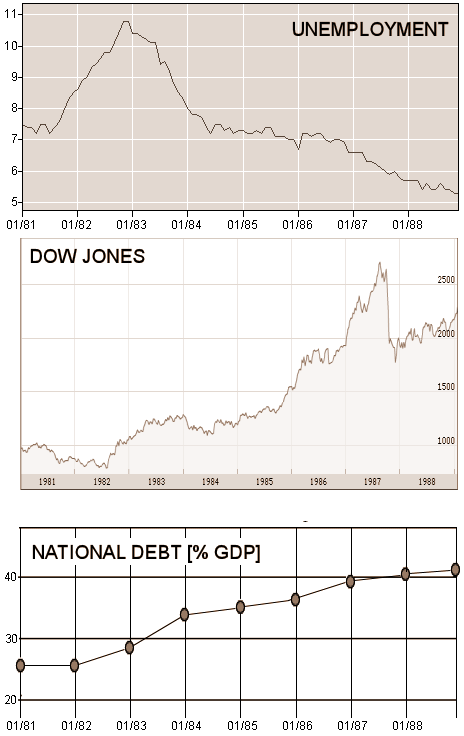Posted on Sunday 8 March 2009
[If you too become obsessed with Deregulation, selise has the definitive timeline]
From Stiglitz’s 2003 book, The Roaring Nineties:
For more than half a century, commercial banking, which takes deposits from households and firm and makes conventional loans, had been separated from investment banking, which helps firms issue new bonds and shares. The same company could not lend money and also sell securities, in other words. The Glass-Steagall Act, which barred this, was one of the reforms put in place by the administration of Franklin Roosevelt, in response to the wave of bank failures that had followed the Great Crash of 1929. But the ideas behind Glass-Steagall went back even further, to Teddy Roosevelt and his efforts to break up the big trusts, the large firms that wielded such economic power. TR and the Progressives of the early twentieth century were alarmed not only about the concentration of economic power but about its impact on the political process. When enterprises become too big, and interconnections too tight, there is a risk that the quality of economic decisions deteriorates, and the "too big to fail" problem rears its ugly head. Expecting to be bailed out of trouble, managers become emboldened to take risks that they might otherwise shun. In the Great Depression, when many banks were on the ropes, it was, in effect, the public that bore the risk, while the bank got the reward. When banks failed, the taxpayers paid the price through publicly funded bailouts.The Glass-Steagall Act of 1933 addressed a very real problem. Investment banks push stocks, and if a company whose stock they have pushed needs cash, it becomes very tempting to make the loan. The U.S. system worked in part because under Glass-Steagall the banks provided a source of independent judgments on the creditworthiness of businesses. When a "full-service" bank makes most of its money by selling equities and bonds or arranging "deals," issuing loans becomes almost ancillary—a sideline…
With Glass-Steagall, the United States rejected the course followed by other nations, such as Japan and Germany, that did not separate commercial and investment banking—I believe to our evident benefit. But American banks themselves saw Glass-Steagall as reducing their opportunities for making profits and not surprisingly began to insist that the rules separating commercial and investment banking had become passé. In an age of free-floating capital and giant multi-national companies, they argued, banks had to be integrated, to make advantage of what are called "economies of scope"—the benefits that businesses can reap by working in many different areas at once. Global competition was too intense for bank concentration to be a serious worry [though in fact, many borrowers, especially small and medium-siaze firms, have access only to a few potential lenders], and Glass-Steagall supposedly put American banks at a disadvantage.
In the mid-nineties, the banks mounted a concerted campaign to have Glass-Steagall repealed. The conditions were favorable. Prosperity made the notion of bank failure seem very remote [though the S&L crisis of the eighties ought to have been a caution]…
-
The Federal Deposit Insurance Corporation [FDIC]: In order to put a stop to the destructive runs on Banks, the Federal Government got into the Insurance business, insuring Savings Accounts in case of Bank failure.
-
The Separation and Regulation of Commercial and Investment Banks: This is the part known as regulation. Hearings disclosed obvious conflicts of interest when Banks invest money from their vast holdings in Savings Accounts. So, the Bill imposed strong restrictions on investing by these banks [Commercial Banks]. Likewise, the behavior of Banks that were involved in investing were also heavily regulated. It also limited Bank Mergers. The design here was clear, In the boom before the Crash, Banks had loaned money to people to put in the Market and had invested their assets as well. Glass-Stegall imposed restrictions to stop speculators from using other people’s money. Bank size [merger] was also regulated

the idiots deciding…


 I find this statement remarkable, "Fed Vice Chairman Donald Kohn declined to identify AIG’s trading partners. He said doing so would make people wary of doing business with AIG." Anyone in the galaxy not already wary of doing business with AIG ought to be committed on the spot. My suspicion is that AIG is trying to isolate AIG-FP from the remainder of it’s other businesses and keep itself going [recall
I find this statement remarkable, "Fed Vice Chairman Donald Kohn declined to identify AIG’s trading partners. He said doing so would make people wary of doing business with AIG." Anyone in the galaxy not already wary of doing business with AIG ought to be committed on the spot. My suspicion is that AIG is trying to isolate AIG-FP from the remainder of it’s other businesses and keep itself going [recall 
 WASHINGTON (CNN) – Newt Gingrich is talking out loud about a possible run for the White House in 2012. “Calista and I will look seriously, and we’ll probably get our family totally engaged, including our two grandchildren, probably in January 2011, and we’ll look seriously at whether or not we think its necessary to do it,” Gingrich told reporters in Ashland, Virginia last night, according to the Richmond Times-Dispatch.
WASHINGTON (CNN) – Newt Gingrich is talking out loud about a possible run for the White House in 2012. “Calista and I will look seriously, and we’ll probably get our family totally engaged, including our two grandchildren, probably in January 2011, and we’ll look seriously at whether or not we think its necessary to do it,” Gingrich told reporters in Ashland, Virginia last night, according to the Richmond Times-Dispatch.